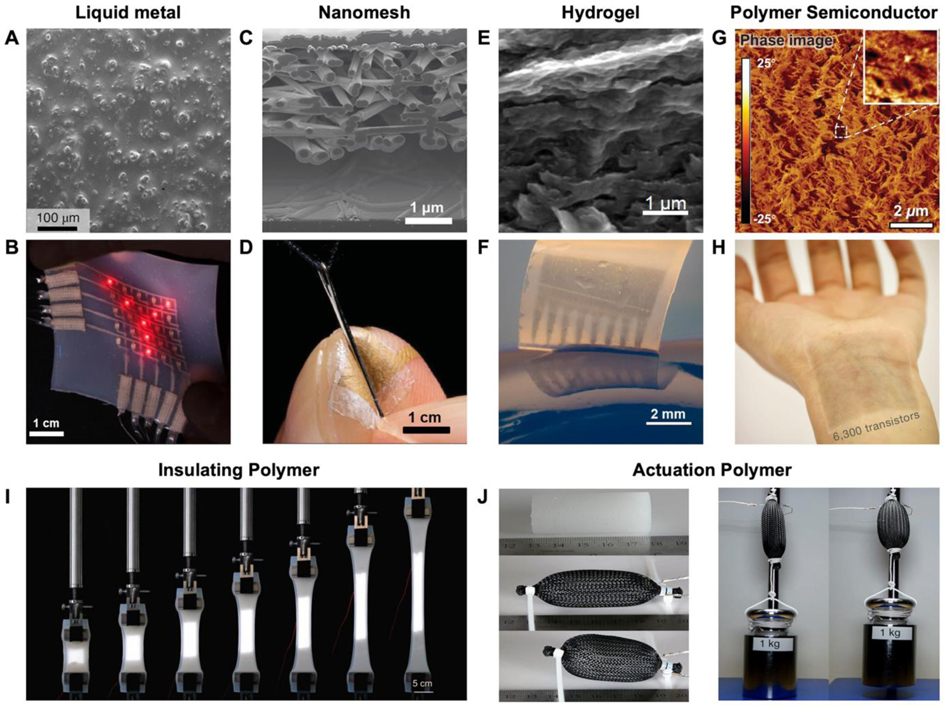Figure 2.
Materials for soft electronic devices. A) Scanning electron microscopy (SEM) image of the surface on a biphasic gallium–indium (bGaIn) alloy film. B) Photograph of a multilayer LED display based on the bGaIn interconnects. A,B) Reproduced with permission.[40] Copyright 2021, Springer Nature. C) Cross-sectional SEM image of a gold nanomesh-based pressure sensor. D) The ultrathin pressure sensor attached conformally to the index finger. C,D) Reproduced with permission.[44] Copyright 2020, American Association for the Advancement of Science (AAAS). E) SEM image of interconnected poly(3,4-ethylenedioxythiophene) (PEDOT) polymer networks in the electrically conductive hydrogels (ECH). F) A micropatterned ECH elastic electrode array. E,F) Reproduced with permission.[58] Copyright 2019, Springer Nature. G) Atomic force microscope (AFM) phase image of a semi-conductive polymer under 100% strain. G) Reproduced with permission.[41] Copyright 2017, AAAS. H) A large-scale array of intrinsically stretchable transistors using the polymer as the semiconductor layer. H) Reproduced with permission.[42] Copyright 2018, Springer Nature. I) A hyper-elastic light-emitting capacitor encapsulated in insulating polymer (Ecoflex 00–30) under uniaxial stretching. I) Reproduced with permission.[66] Copyright 2016, American Association for the Advancement of Science. J) McKibben-type artificial muscles (soft polymer composite material inside braided mesh sleeving) and corresponding actuation. J) Reproduced under the terms of the CC-BY Creative Commons Attribution 4.0 International license.[65] Copyright 2017, The Authors, published by Springer Nature.

